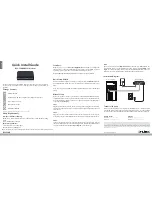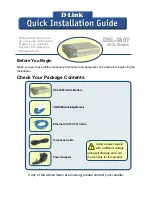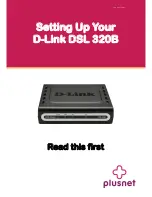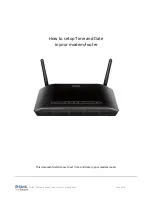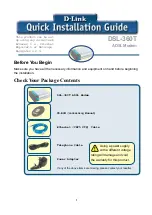
application. Depending on the construction and radiation pattern, the gain is usually between -3dB to +
3dB. Their use is very popular on road side kiosks, buses, trains, aircraft, or where covert
communication is required.
9.4.6
ANTENNA MOUNTING
Location:
The antenna should be mounted in a clear area, as far away as possible from obstructions such as metal
constructions, buildings and foliage.
Height:
The URT500 operates in the UHF band, which requires near line of sight communication. Hence, for
extended ranges the height of the antenna is important.
9.4.7
POLARISATION
A Yagi or corner reflector antenna can be mounted for vertical or horizontal polarisation. Scanning
systems employing a vertically polarised antenna will necessitate the outstation antennas to be of the
same orientation. In vertical polarisation the elements are perpendicular to the ground. By mixing
polarisation within systems, unwanted signals can be reduced by as much as 18dB. However, such
systems require detailed planning.
9.4.8
ALIGNMENT
If a directional antenna is to be used, it will need alignment with the scanner or communicating station.
A map and compass can be used, but the final adjustment should be performed by measuring the
receive signal strength (RSSI) from the scanner, as outlined in the operations section.
9.4.9
ANTENNA COAX FEEDER:
As with the antenna, the use of the wrong coax feeder can seriously affect the performance of the
system. Hence, the coax cable should be selected to give a low loss over the distance required. For
outstations in the local vicinity of the scanner/ base station, the loss is not very important but for distant
stations the loss is very important. As a rule of thumb, never operate a system with a loss of more than
3dB.
To illustrate the point, a 3dB loss in the feeder will result in a 50% loss in transmitted RF power and a
50% reduction in the received signal strength. Therefore, double the received signal strength will be
required for the same bit error rate. Although increasing the RF power will compensate for the loss in
transmitted power, there is no effective way to improve the received signal strength.
Coax cable should be installed in accordance with the manufacturers’ instructions, with cable runs kept
as short as possible. Sharp bends, kinks and cable strain must be avoided at all costs. If long term
reliability is required, the cable must be securely mounted to avoid excessive movement and
longitudinal strain, due to high winds, rain and snow.
9.4.10
SIGNAL LOSS VERSES CABLE LENGTH AT 500MHZ
Cable Type
Attenuation
Per 100ft
Attenuation
per 100M
RG58
13.0dB
37.0dB
RG213
6.0dB
17.5dB
LDF2-50 3/8inch Foam Heliax
2.44dB
8.0dB
LDF4-50 1/2inch Foam Heliax
1.60dB
5.26dB
LDF5-50 7/8inch Foam Heliax
0.883dB
2.9dB
LDF6-50 1-1/4inch Foam Heliax
0.654dB
2.15dB
LDF7-50 1-5/8inch Foam Heliax
0.547dB
1.79dB
URT500 Manual
Page 38 of 42
Rev. C – 6 August 2008




















